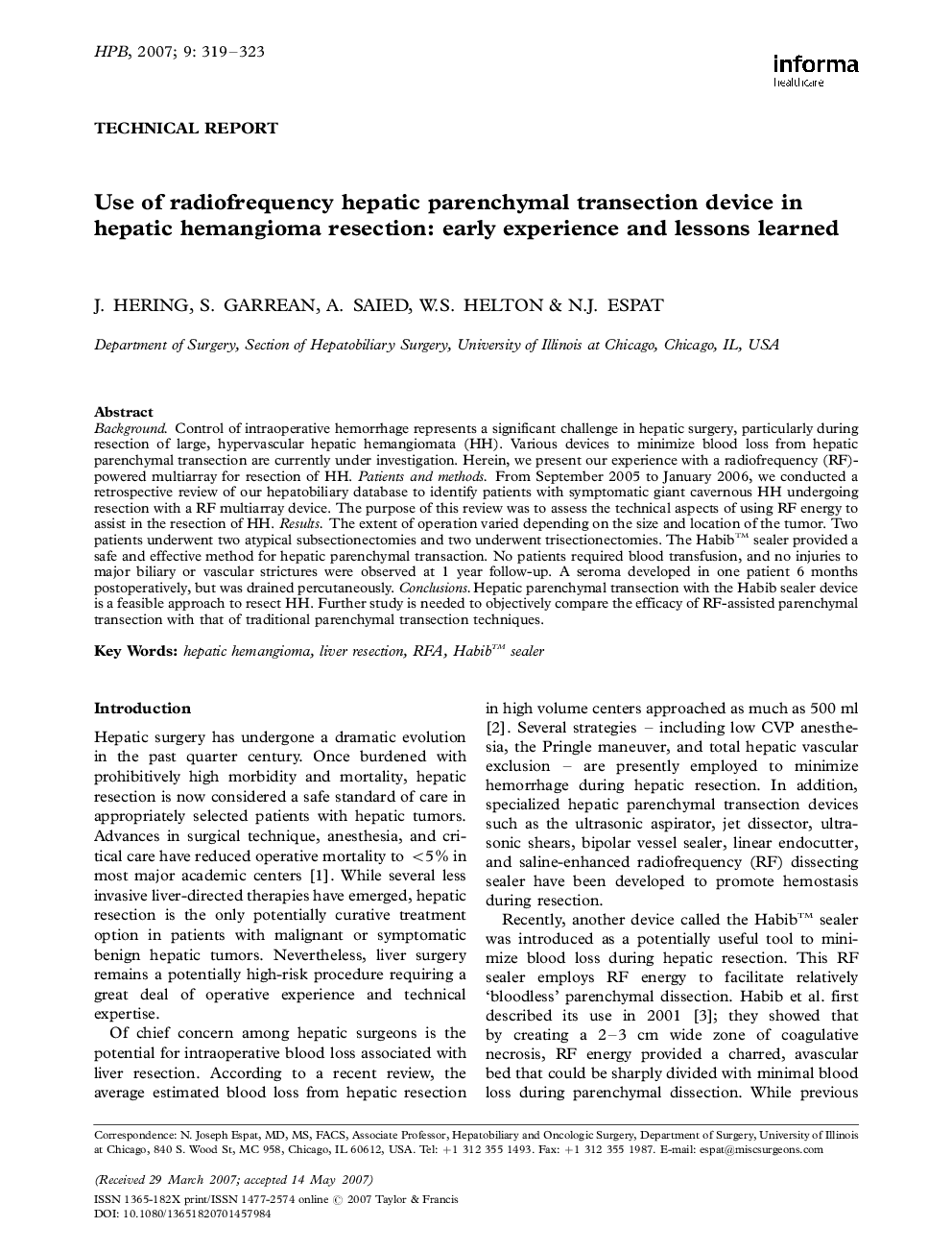| Article ID | Journal | Published Year | Pages | File Type |
|---|---|---|---|---|
| 3269961 | HPB | 2007 | 5 Pages |
Abstract
Background. Control of intraoperative hemorrhage represents a significant challenge in hepatic surgery, particularly during resection of large, hypervascular hepatic hemangiomata (HH). Various devices to minimize blood loss from hepatic parenchymal transection are currently under investigation. Herein, we present our experience with a radiofrequency (RF)-powered multiarray for resection of HH. Patients and methods. From September 2005 to January 2006, we conducted a retrospective review of our hepatobiliary database to identify patients with symptomatic giant cavernous HH undergoing resection with a RF multiarray device. The purpose of this review was to assess the technical aspects of using RF energy to assist in the resection of HH. Results. The extent of operation varied depending on the size and location of the tumor. Two patients underwent two atypical subsectionectomies and two underwent trisectionectomies. The Habib⢠sealer provided a safe and effective method for hepatic parenchymal transaction. No patients required blood transfusion, and no injuries to major biliary or vascular strictures were observed at 1 year follow-up. A seroma developed in one patient 6 months postoperatively, but was drained percutaneously. Conclusions. Hepatic parenchymal transection with the Habib sealer device is a feasible approach to resect HH. Further study is needed to objectively compare the efficacy of RF-assisted parenchymal transection with that of traditional parenchymal transection techniques.
Keywords
Related Topics
Health Sciences
Medicine and Dentistry
Endocrinology, Diabetes and Metabolism
Authors
J. Hering, S. Garrean, A. Saied, W.S. Helton, N.J. Espat,
